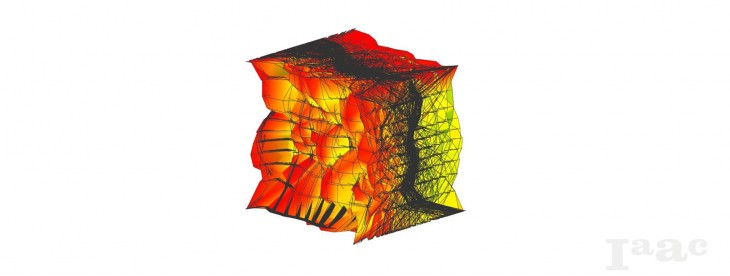
As a part of the IaaC research studio ‘Intelligent Cities’ and our specific topic “Renaturalization and Metabolism we are currently working with the concept of bioreceptivity at an urban scale. This surface topology study aims at generating geometry optimized for bioreceptivity using as parameters: solar radiation, water retention capability and surface area:
Bioreceptivity
This term refers to ‘The ability of a material to be colonized by living organisms’ and is determined by a long list of parameters relating to material properties, climate and microclimate. However, for this optimization study 3 main parameters were chosen: solar radiation, water retention and surface area.

Optimization objectives
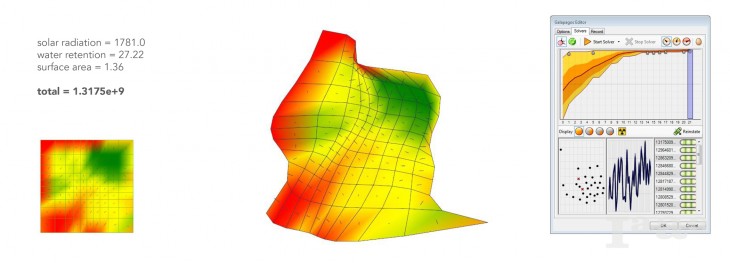
Iteration #1: The solution scoring highest one the combination of all three objectives
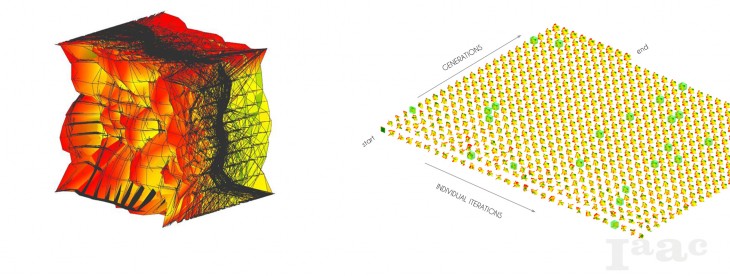
Left: Solution domain, Right: Solution matrix
Genome – geometric variation domain
The geometry domain comes from the operations listed below. The base surface is divided in a grid of 35 points,the translation of each point is controlled by a separated slider and is confined within a domain of 1m in the axis perpendicular to the surface.

Genome
Quantification 1 – Solar Radiation
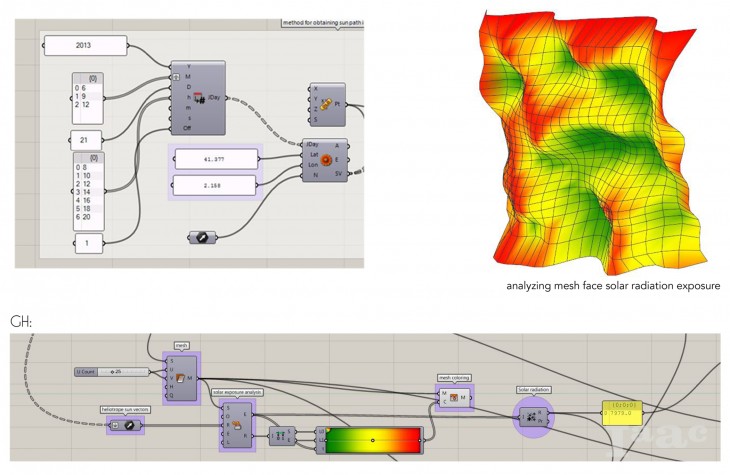
Quantification of solar radiation on surface
The quantification of received solar radiation was done using sun vectors from Heliotrope together with the GH Mesh exposure component. The sun vectors used in the calculations were taken from 3 different days of the year, namely December, June and September. During these days the vectors for 7 different hours of the day were included.
Quantification 2 – Water Retention
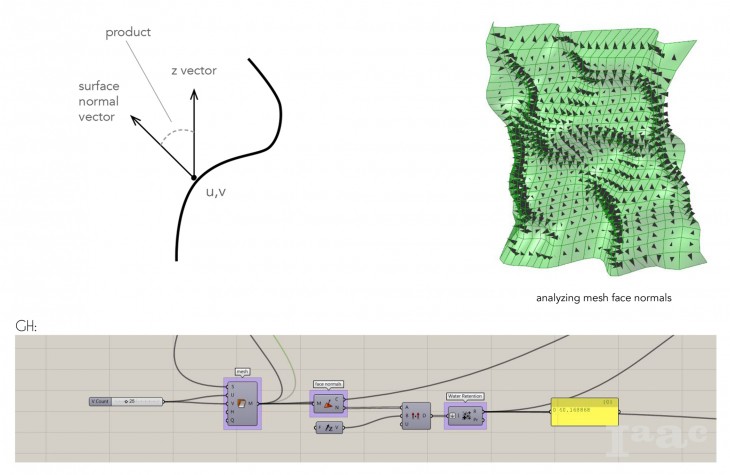
Quantification of estimated water retention in surface
This quantification was done by evaluating the direction of the surface curvature in a grid of control points throughout the surface. More specifically: summing up the dot product of the face normal of each mesh face and its z-vector. The optimization was set up to look for the highest value of combined dot products throughout the mesh.
Bioreceptivity Surface Topology Optimization is a project of IaaC, Institute for Advanced Architecture of Catalonia developed at Master in Advanced Architecture in 2016 by:
Students: Peter Geelmuyden Magnus
Faculty: Luis Fraguada, Rodrigo Aguirre
Graphic Credits:
Surface area icon: Created by Agus Purwanto from the Noun Project
Sun icon: Created by Cagri Yurtbasi from the Noun Project
Clock icon: Created by Jamie Wilson from the Noun Project
Water drop icon: Created by Vicons Design from the Noun Project
